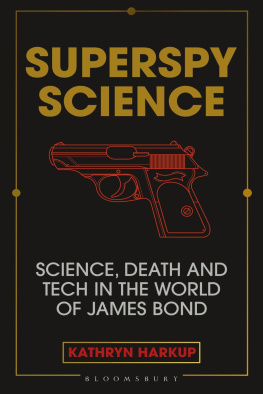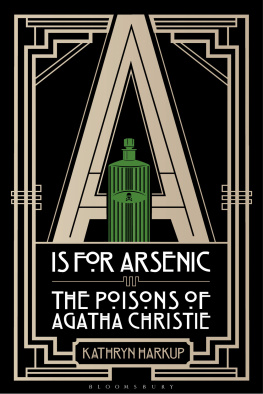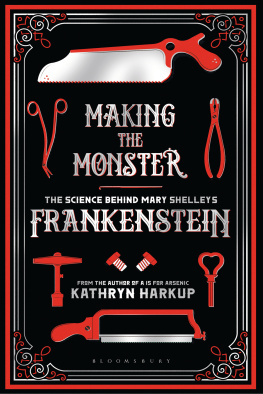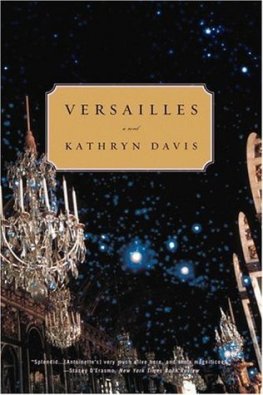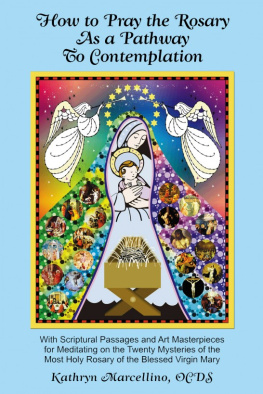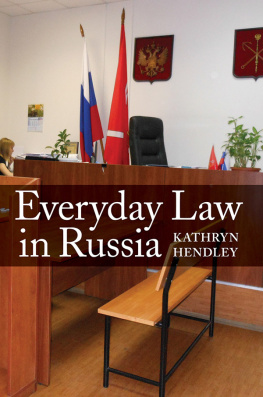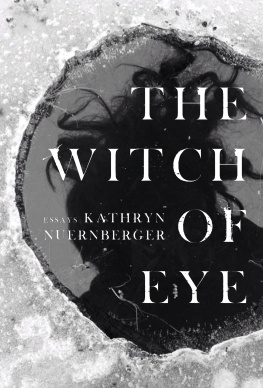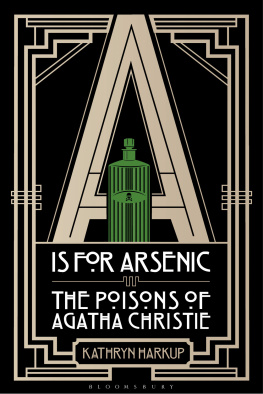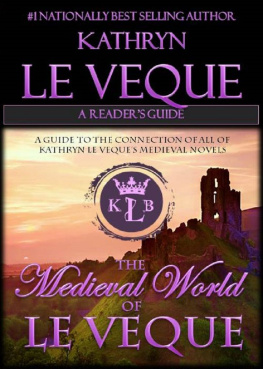Kathryn Harkup - Superspy Science
Here you can read online Kathryn Harkup - Superspy Science full text of the book (entire story) in english for free. Download pdf and epub, get meaning, cover and reviews about this ebook. year: 2022, publisher: Bloomsbury Publishing, genre: Non-fiction. Description of the work, (preface) as well as reviews are available. Best literature library LitArk.com created for fans of good reading and offers a wide selection of genres:
Romance novel
Science fiction
Adventure
Detective
Science
History
Home and family
Prose
Art
Politics
Computer
Non-fiction
Religion
Business
Children
Humor
Choose a favorite category and find really read worthwhile books. Enjoy immersion in the world of imagination, feel the emotions of the characters or learn something new for yourself, make an fascinating discovery.
- Book:Superspy Science
- Author:
- Publisher:Bloomsbury Publishing
- Genre:
- Year:2022
- Rating:5 / 5
- Favourites:Add to favourites
- Your mark:
- 100
- 1
- 2
- 3
- 4
- 5
Superspy Science: summary, description and annotation
We offer to read an annotation, description, summary or preface (depends on what the author of the book "Superspy Science" wrote himself). If you haven't found the necessary information about the book — write in the comments, we will try to find it.
Superspy Science — read online for free the complete book (whole text) full work
Below is the text of the book, divided by pages. System saving the place of the last page read, allows you to conveniently read the book "Superspy Science" online for free, without having to search again every time where you left off. Put a bookmark, and you can go to the page where you finished reading at any time.
Font size:
Interval:
Bookmark:

Its dark. Everything is calm and quiet except for the lapping of waves against the shore, the distant chink of champagne glasses and occasional snatches of laughter caught on the breeze. The agent emerges from the water and wades up the beach. He glances round before peeling off his specially made rubber over-suit to reveal the tuxedo he is wearing underneath. He spots his contact, who rushes over to whisper some hurried words and sprinkle him with a few drops of Hennessy brandy, the final touch needed to give the impression of a drunken party-goer. As prepared as he ever will be, the agent strides towards the seafront casino and introduces himself.
Audiences have certain expectations when they sit down to watch or read a James Bond adventure. Secret missions, daring stunts, big explosions and evil plots may be part of any spy, thriller or action film. But there is something unique about Bond, something the filmmakers themselves came to term Bondian. There is no other franchise like it. A secret agent risking his life swimming through hostile waters to infiltrate enemy territory dressed in a dinner jacket and black tie is exactly what you would expect of an opening sequence in a 007 film. It is how one of the most iconic Bond films, Goldfinger, introduces itself to audiences. It is also real life.
The man with the evening suit making his stylish way towards the casino in the opening paragraph was Tazelaar, Pieter Tazelaar. He was a member of the Dutch Resistance who was dropped offshore at Scheveningen in Nazi-occupied Netherlands at 0435 hours on 23 November 1940. The mission, the boat that dropped him there, the rubber suit that kept his tuxedo dry, had all been arranged by the British secret service.
The world of James Bond is a fantasy of larger-than-life villains, plot holes you could steer Strombergs supertanker through and cars overstuffed with so many gadgets they should be undriveable. But, without some grounding in real life, some grains of truth at its heart, or acknowledgement of the real world, it would become an absurd parody of itself.
The well-worn formula of girls, quips, guns and plans to take over the world has attracted an estimated quarter to a half of the worlds population to watch a Bond film, and over 100 million people to read the books. Part of the joy of watching and reading these stories is living a thrilling vicarious life from the comfort of our sofa, basking in their glamour but untroubled by the danger from which our fictional hero is always fighting to extricate himself.
There will be times in this book when I write about Bond and his world as though they are real. This will annoy some but be completely understandable to others. Many of us have fantasised about living Bonds exciting life or speculated what we might have done in his position. But with 007s adventures deliberately paced at breakneck speed, it is only after putting down the book or staggering out of the cinema at the end of the film that we can catch our breath and start to think about what just happened.
This book is an extended version of those conversations and speculations after watching a Bond film, told from the point of view of a fan and a scientist. Film by film and iconic moment by iconic moment, this book explores some of the many tropes that we have come to love and expect from a Bond adventure. So, with cuffs straightened, vodka martini in hand and tongue firmly in cheek, lets take aim straight down the gun barrel and head off on our mission to explore the science of James Bond.
To Bill Backhouse

A white dot moves across the screen. A man appears at its centre. The circle follows him as he walks. Suddenly, he turns, aims a gun and shoots. Red washes down the screen and loud, familiar notes blast out from the speakers. Bright colours, abstract shapes and silhouettes of writhing women appear. Within seconds we know exactly where we are and what to expect. More or less.
The James Bond theme, the gun-barrel sequence, the highly stylised titles it was all there from the start. The only things missing from the first Bond film were a pre-title sequence and a title song. The following 24 films would be introduced in almost the same way, rearranged and reinterpreted, but instantly recognisable as part of the same franchise. Each new cinematic addition is simultaneously comfortingly familiar and new and exciting. It is an impressive trick the producers pull off: repeatedly reinventing a highly formulaic series of films that draws audiences of millions back for more, time and time again.
Dr No started what would become a familiar pattern over the following 60 years. The film opens with an intrigue: the assassination of a man and woman who both work for the secret service. Bond is briefed by M and equipped for his mission by the Quartermaster (see ) and Bond getting the girl. Bond escapes Dr Nos lair as it blows up, thanks to his interference with the nuclear reactor, grabbing Ryder along the way, and they sail off together in a little boat. They finally kiss as the credits roll.
There is still time for cocktails, sardonic quips, daring stunts, exciting chases, magnificent sets and outrageous sexual innuendo, and all in a very entertaining, fun, fast-paced two(ish)-hour film. There is, of course, the secret agent at the centre of it all, James Bond, but he is the focus of later chapters (). There are many other not so obvious factors that go into making a Bond film characteristically Bondian. One of the most notable features of any 007 film is the supreme self-assurance that oozes from every frame. Bond and everyone involved know exactly what they are doing.
Such confidence came from the producers firm belief in the project and certainty as to how best to present this character and his world on the big screen. It was also, in no small part, thanks to the existence of several novels and their author Ian Fleming being on hand to offer advice, background and ideas for what 007 was and should be. James Bond and his world are the products of elements from Flemings own life, his fertile imagination and lashings of exaggeration.
Ian Lancaster Fleming was born on 28 May 1908 to Valentine (Val), a Conservative MP who died a war hero in 1917, and Evelyn, who dominated Ians life, especially after the death of her husband. Fleming attended Eton and Sandhurst but left both under a cloud. Ian seemed to have found a role that suited him but, bowing to family pressure, he gave it up. He went into banking then stockbroking, jobs he obtained based on his family owning a bank rather than any specific talent or qualifications, and was terrible at both.
Salvation for Fleming came in the form of the Second World War. He was recruited to work as personal assistant to the head of the Naval Intelligence Division (NID), Admiral Godfrey. His charm and connections made him ideal for the role although he had little in the way of actual qualifications or experience.
Though Fleming was at the heart of many intelligence operations during the war, and met many people who would provide inspiration for his daring fictional spy hero, he was never personally involved in a mission. The risk of his being captured and divulging secret information to the enemy was too great. His high alcohol and cigarette consumption also ruled him out on health reasons, traits he passed on to his fictional spy, minus the debilitating hacking cough or hangovers.
Next pageFont size:
Interval:
Bookmark:
Similar books «Superspy Science»
Look at similar books to Superspy Science. We have selected literature similar in name and meaning in the hope of providing readers with more options to find new, interesting, not yet read works.
Discussion, reviews of the book Superspy Science and just readers' own opinions. Leave your comments, write what you think about the work, its meaning or the main characters. Specify what exactly you liked and what you didn't like, and why you think so.

